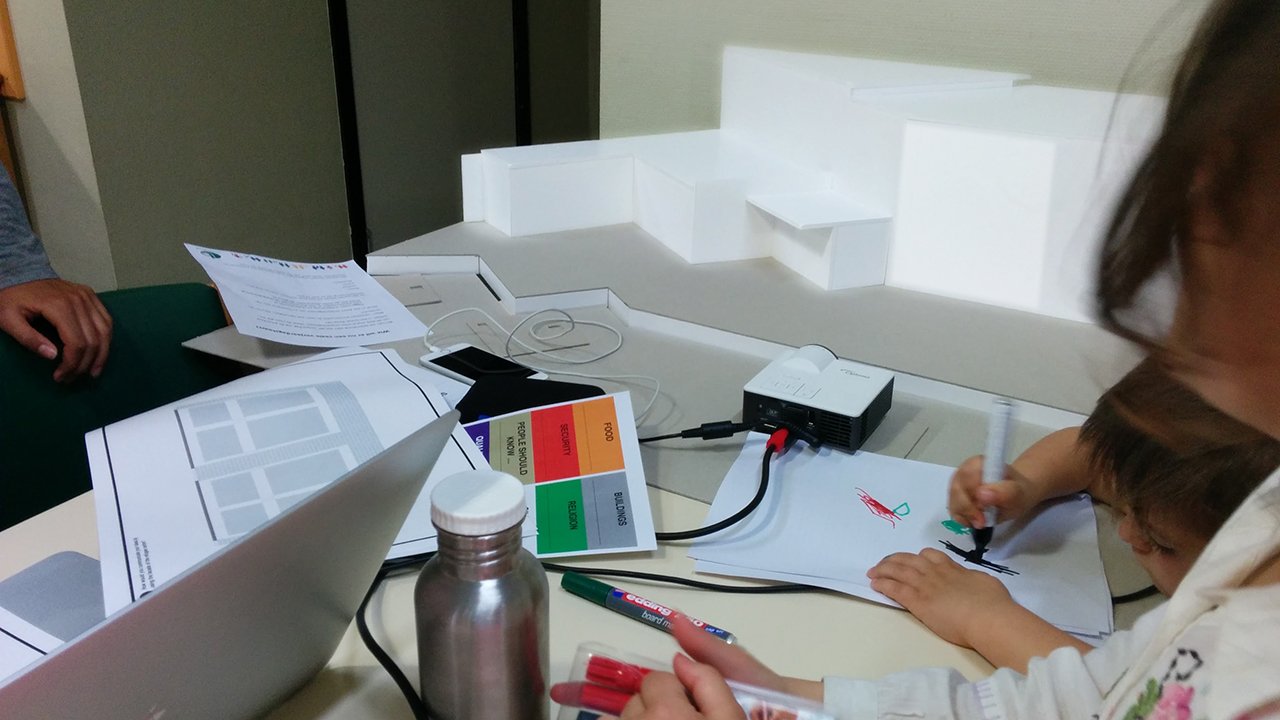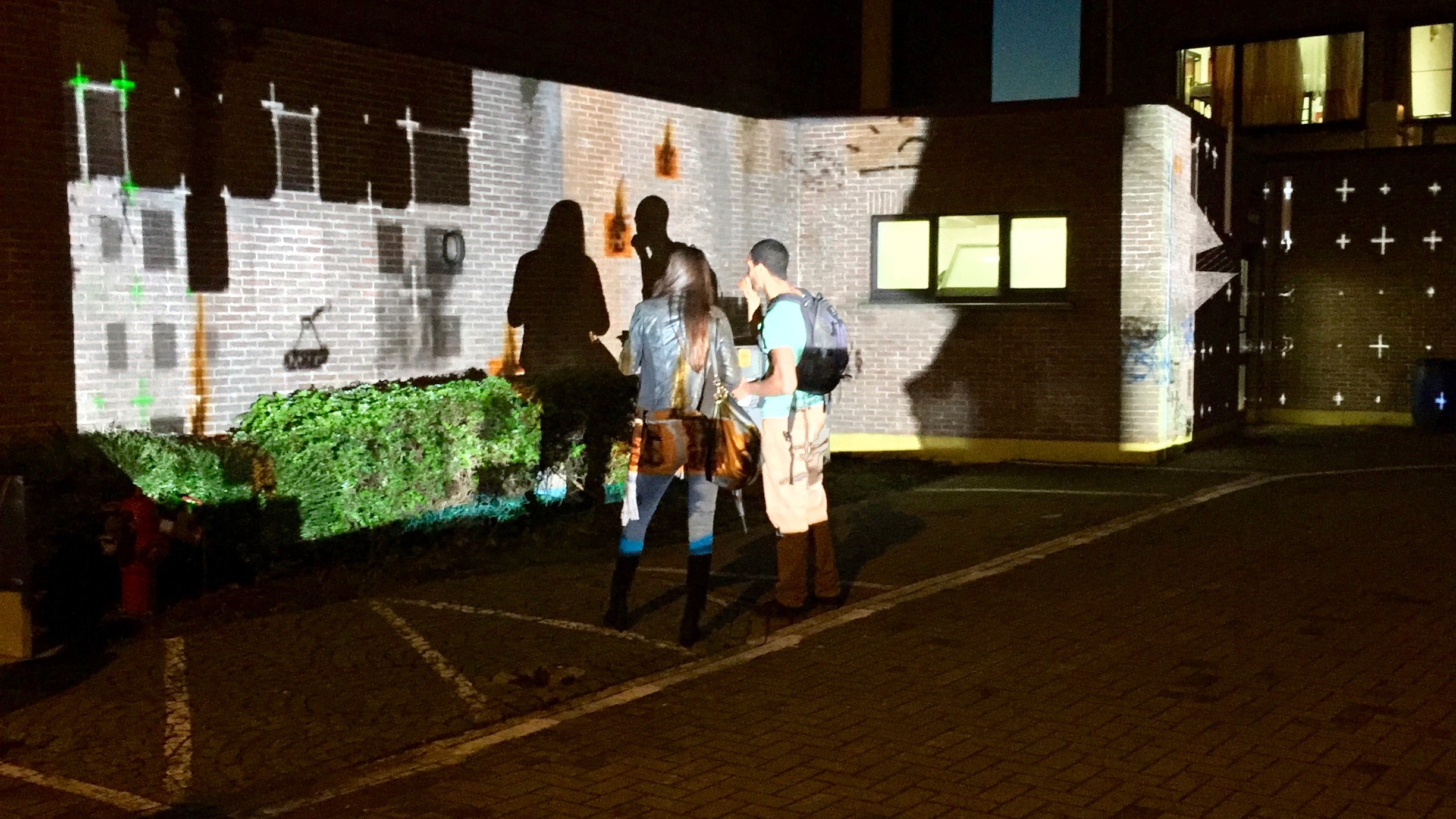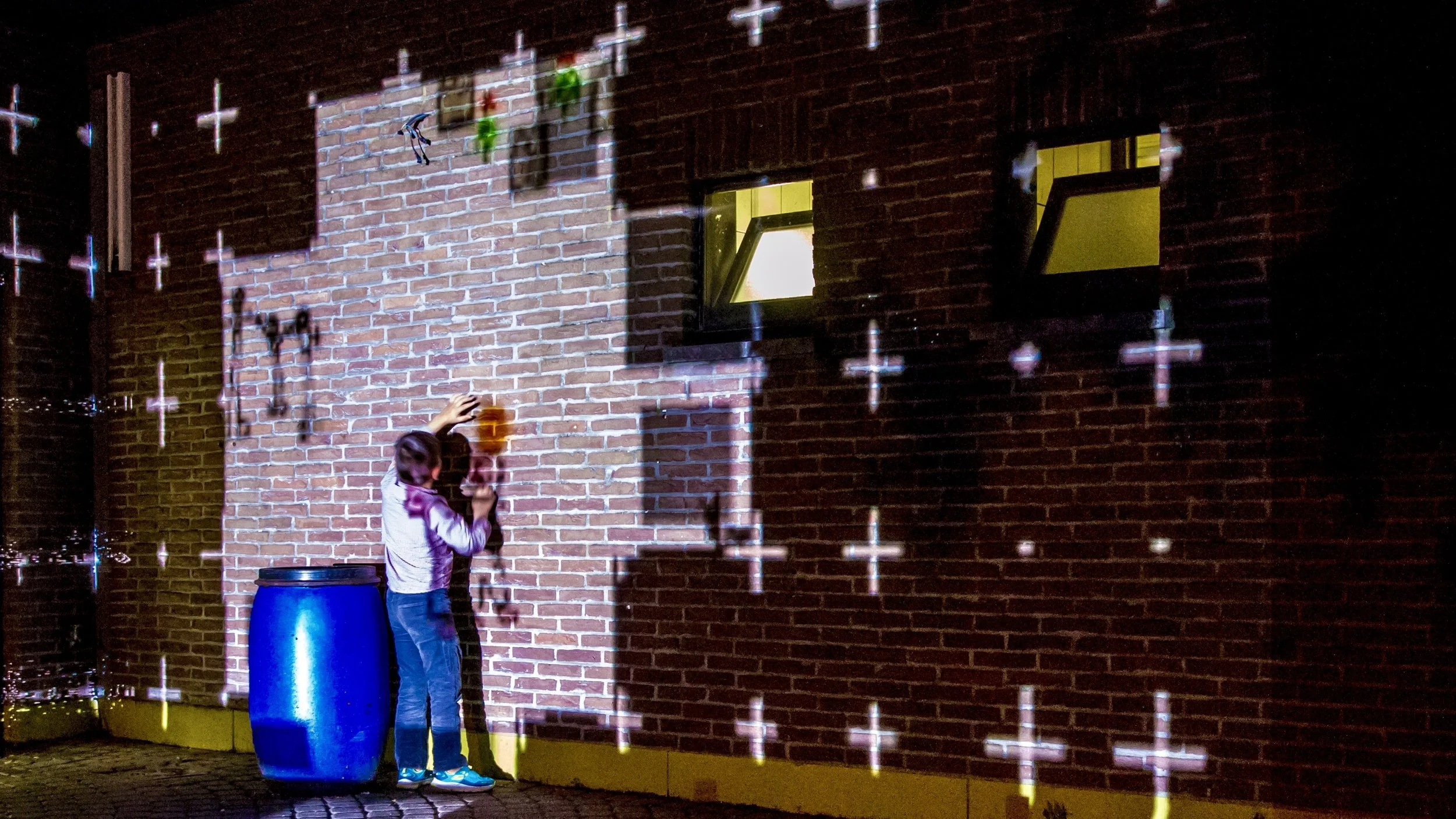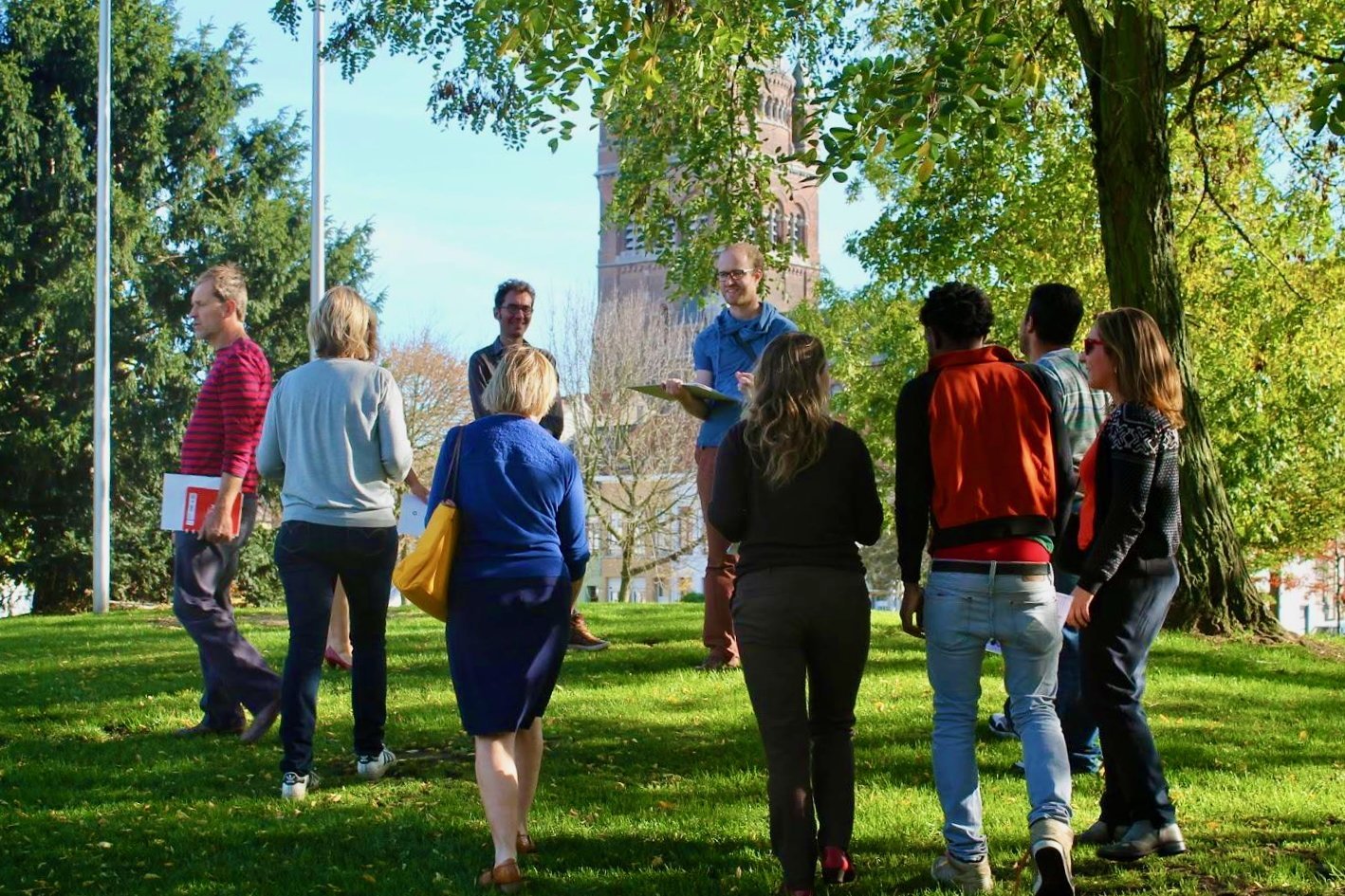Participatory design of media architecture to spark meaningful civic dialogue
Client
University of Leuven, Department of Home Affairs (Belgium)
Timeframe
July 2016 - August 2016
Role
Principal, Lead Researcher
Engagement
20+ recent immigrants, local residents




Objective
To enable public participation in the design of hyperlocal media architecture that sparks meaningful civic discourse.
Methodology
The project followed a three-step participatory process:
Phase 1: I organised and conducted design workshops with refugees and community members to co-create visual narratives and design requirements, supported by tools such as iconographic sticker sheets and collaborative sketching sessions.
Phase 2: With support from a design professional, I developed an interactive visualisation of the visual narratives created in the design workshops, depicting refugees' journeys from conflict to comfort. I developed tools to map the visualisation onto the refugee shelter's facade, with interactive elements triggered by passers-by's presence and movements. The visualisation was presented live at the refugee shelter on two consecutive nights.
Phase 3: I used a combination of field observations, interaction logs, and participant interviews to assess engagement and the impact of the installation.


Deliverables
The primary deliverable was a large-scale, interactive projection mapping installation titled Stories of Exile. This media facade visualised refugee experiences through a dynamic and participatory storytelling medium i.e. a media facade. The projection engaged passers-by, allowing them to reveal story elements by moving and pausing in front of the display. The visuals transitioned through phases of chaos (representing wartime) to resolution (finding refuge), fostering empathy and reflection.
“This projection helps me relate to many refugees we’ve seen here but never got to know. There was always that barrier for me to walk up to them and chat, you know.”
— Research participant (local resident)
Outcome
Stories of Exile gave recent immigrants a unique opportunity to express themselves creatively. While many initiatives focusing on immigration and intercultural connections emphasise dialogue, Stories of Exile explored new territory through visual storytelling. The project invited the local community to reflect on refugees' experiences, aiming to reduce barriers to interaction.
Ultimately, Stories of Exile raised awareness and fostered dialogue about refugee experiences at the hyperlocal level, demonstrating how media architecture can bridge diverse communities and contribute to social cohesion.
I was most surprised by the spontaneous initiative shown by members of the refugee community to build momentum around Stories of Exile. They warmly welcomed visitors, organised refreshments, and actively invited passers-by to participate, sparking conversations that might not have occurred otherwise. This highlights another opportunity for media architecture: co-design and participation in the design process cultivate a sense of ownership and investment in successful outcomes, especially when content isn't commercial in nature.



